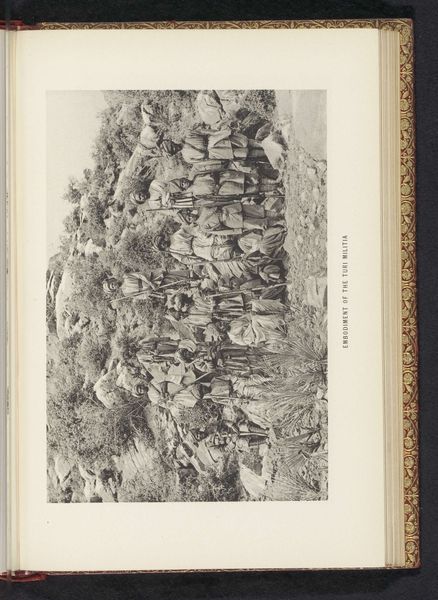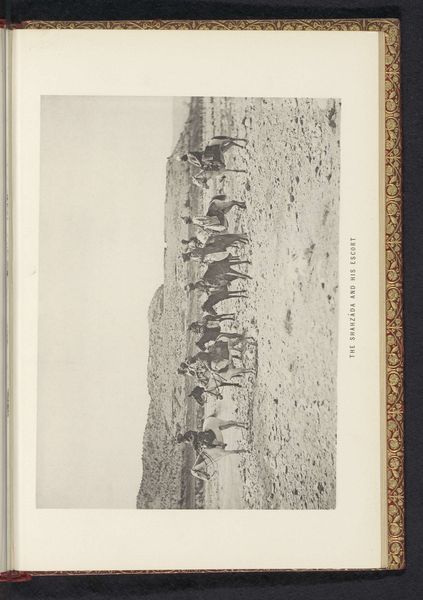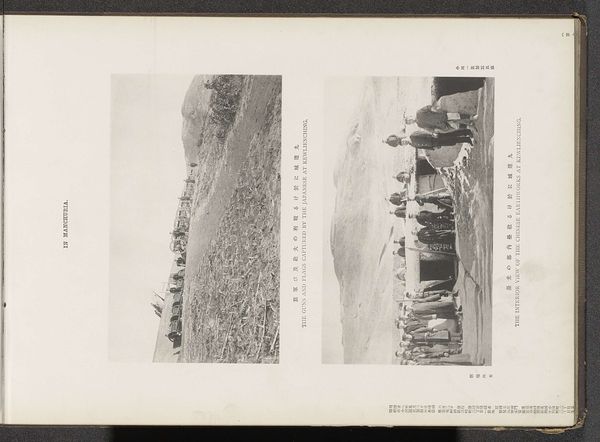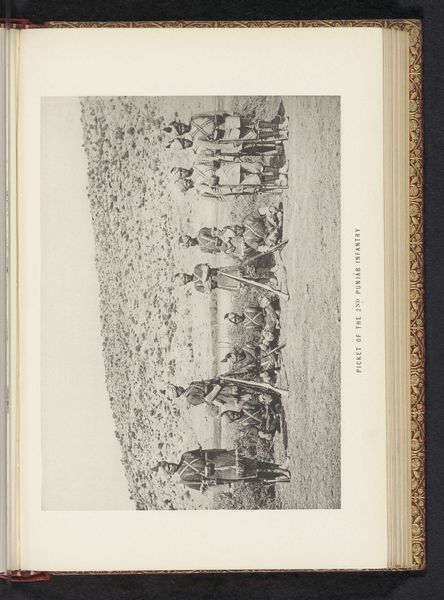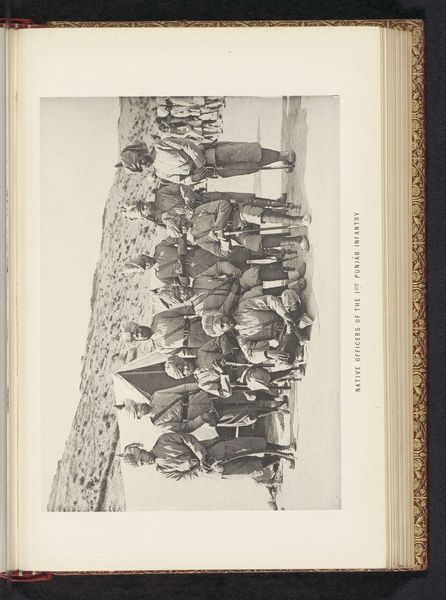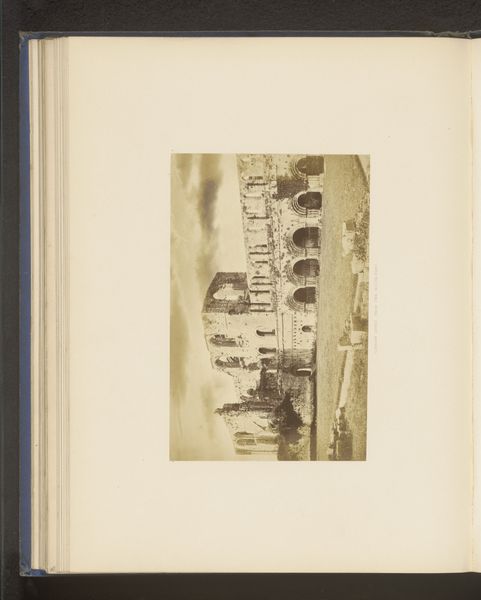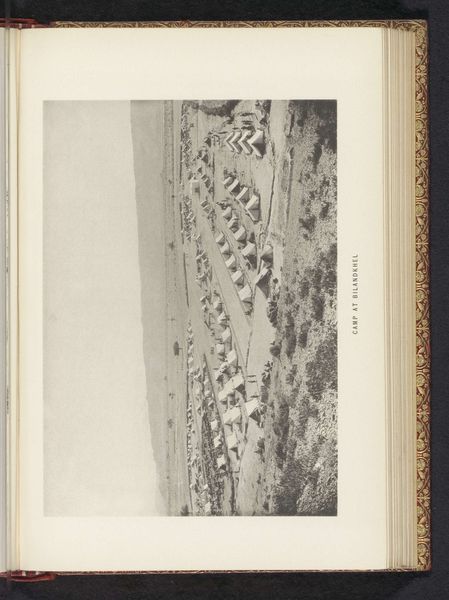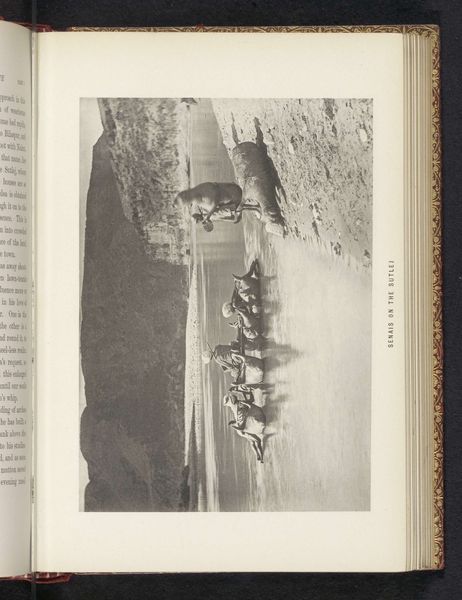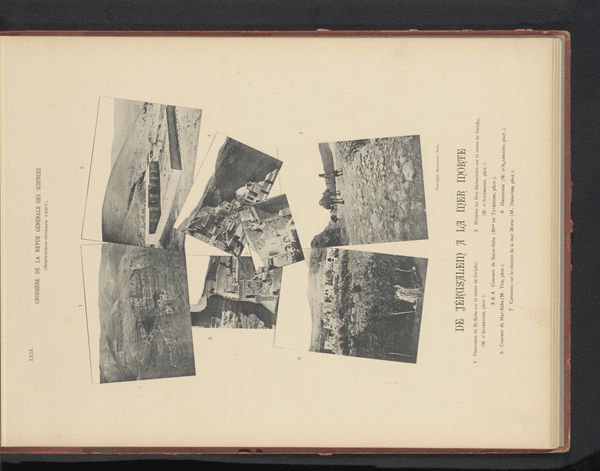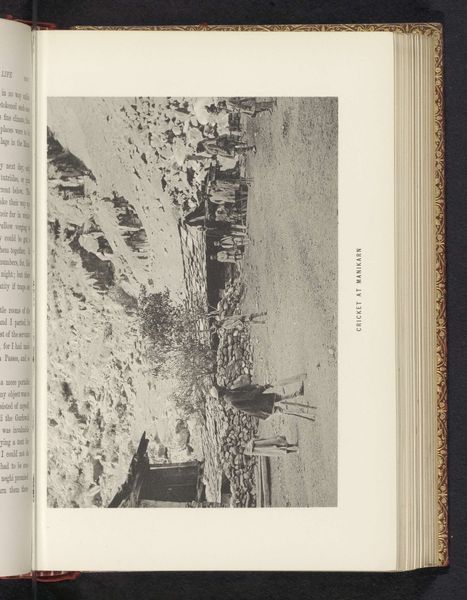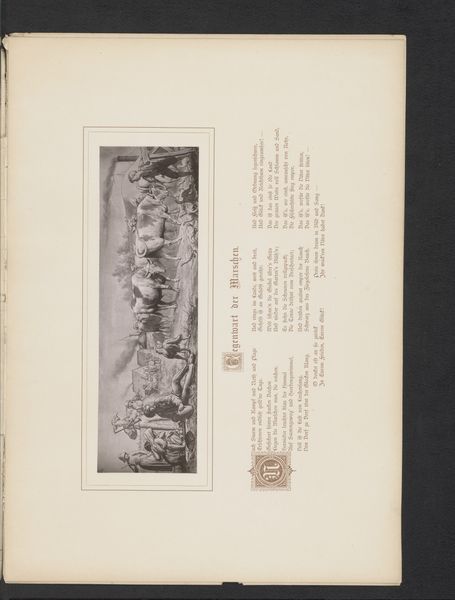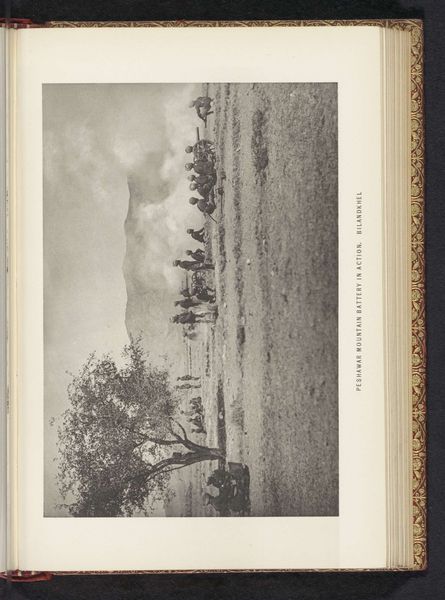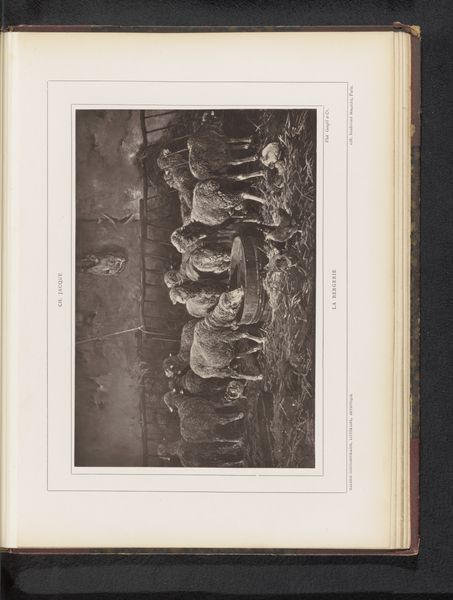
print, photography, gelatin-silver-print
#
portrait
# print
#
landscape
#
figuration
#
photography
#
coloured pencil
#
orientalism
#
gelatin-silver-print
Dimensions: height 105 mm, width 168 mm
Copyright: Rijks Museum: Open Domain
Editor: Here we have a photograph titled "Ghilzais on the road to Kabúl" taken before 1895 by Frederick Saint John Gore. It's a gelatin silver print and the starkness of the landscape really catches my eye. What do you see in this work? Curator: It's crucial to consider the historical moment this image captures, and the power dynamics at play. The "Ghilzais" were a Pashtun tribe, and this photograph presents a particular perspective, likely filtered through a colonial lens. How might the photographer's position as a British official, shape what is depicted and, just as importantly, what is omitted? Editor: I didn't even think about the photographer’s potential biases. Does Orientalism play a role here? Curator: Precisely. Images like this often exoticized the East, reinforcing Western stereotypes and power structures. We need to question whether it’s a respectful depiction or a construction designed to portray a specific narrative about the region and its people, particularly in the context of British imperial ambitions in Afghanistan at that time. Editor: So, we should really be interrogating whose story is being told, and how accurately? Curator: Exactly. Consider the title: "Ghilzais on the road to Kabúl". It suggests a candid snapshot, but could be a staged scene. We need to be critical about its supposed authenticity, and mindful of how these representations contribute to larger historical narratives of cultural and political dominance. Editor: I see the photo in a whole new light now, as less of a document and more of an interpretation – potentially a biased one. Thanks. Curator: My pleasure. Analyzing the historical context and the photographer’s position challenges us to look beyond the surface and consider the social and political forces shaping these images.
Comments
No comments
Be the first to comment and join the conversation on the ultimate creative platform.
